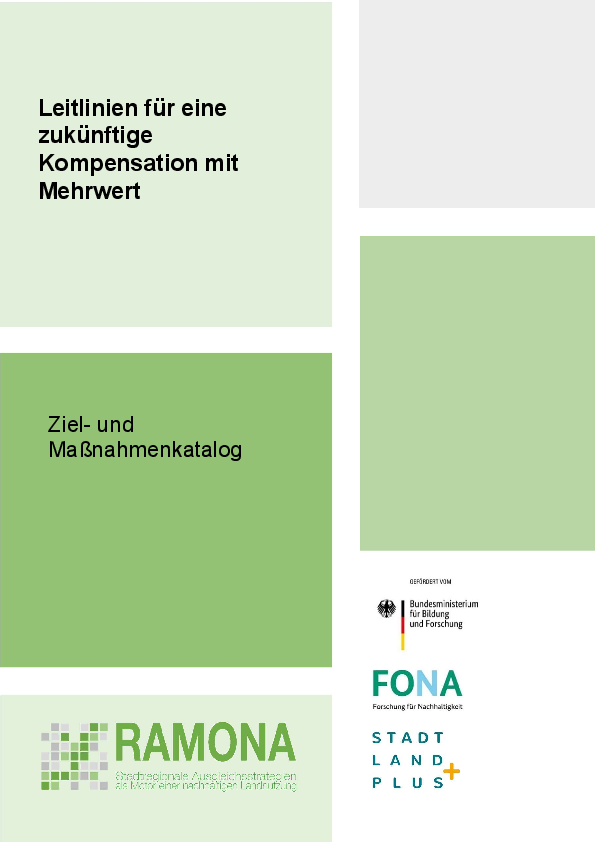In previous compensation practice, the focus of compensation was usually solely on the impaired landscape function or the impaired protected asset. Compensation was deemed to have been achieved as soon as the mathematical balance between the impact and compensation was balanced. Other aspects such as the networking of compensatory measures or the orientation towards overarching objectives such as biodiversity or climate adaptation were hardly considered. Overarching network planning was also of little importance in the selection of compensation measures (cf. results from the spatial and stakeholder analysis). This approach led to isolated compensation areas that were unable to exploit their potential. In view of the limited supply of suitable compensation areas, their monofunctional use is unfavorable and exacerbates the scarcity of land in the region.
Compensation measures can be made more sustainable if they generate added value over and above the legal requirements. These can be functional added values where individual measures fulfil several landscape functions at the same time, for example nature conservation and flood retention. Spatial added values arise when different compensation measures are combined on one area or organized in network structures. Processual added values exist when stakeholders are involved at an early stage, procedures are optimized and compensation measures are implemented in a precautionary manner.
When planning compensation measures, many landscape requirements should be considered together from the outset and result in forward-looking, integrated planning.
What motivates actors in the compensation process? What needs to change at a political level? Statements by representatives from practice, politics and the region on the topic of compensation with added value.
Guidelines for future compensation with added value

How can compensation measures be designed in future so that they are implemented professionally and to the required extent, while at the same time creating benefits for other landscape functions? In response to this question, three focal points for possible added value were formulated: spatial, functional and procedural. As the central finding of the research project, these free aspects define the framework for action for "compensation with added value".
Landscape models for the Stuttgart region

The Stuttgart Region has a wide variety of landscapes. What currently characterizes these landscapes? What would be their ideal condition in the future? How can compensation measures contribute to achieving this ideal-typical state? The landscape models provide answers to these questions for the landscape areas of agricultural landscape, orchards, vineyards, settlement edges, watercourses/floodplains and forest.
Policy recommendation for compensation with added value

In the form of nine demands, the policy paper draws attention to current deficits in the compensation process. It shows what political measures are needed to improve offsetting. The recommendations are backed up with examples of pioneering initiatives that illustrate the potential that can be developed and provide information on how the respective approach can be put into practice. The demands made are aimed at political decision-makers at the federal, state and local levels.
Further documents from seminars and excursions
- Providing compensation and strategic land management
- Bundled compensation and inter-municipal coordination
- Possibilities for the multifunctional design of compensation measures
- "Compensation measures and then? - Successful implementation of maintenance and monitoring"
- "Landscape plan - the key instrument for planning compensation measures with added value"
- "Production-integrated compensation - a cooperative approach"
- Excursion: Multifunctional measures in the municipality of Wolfschlugen









